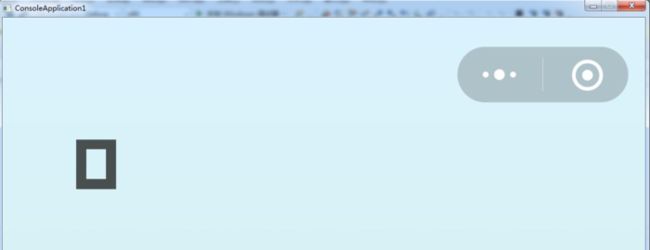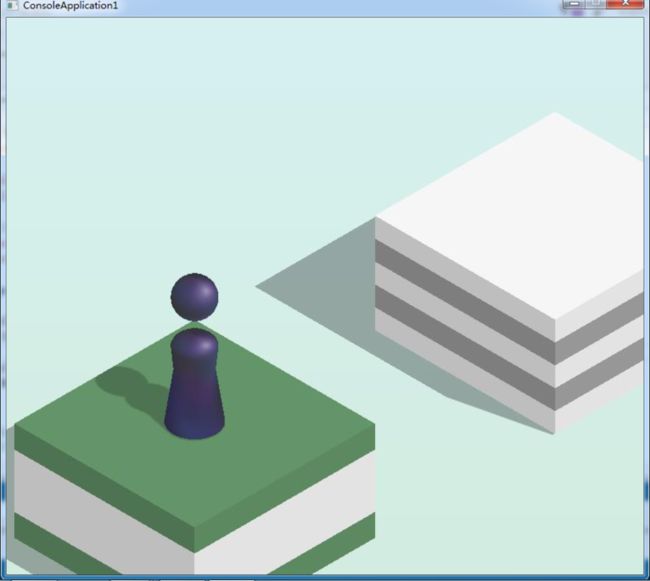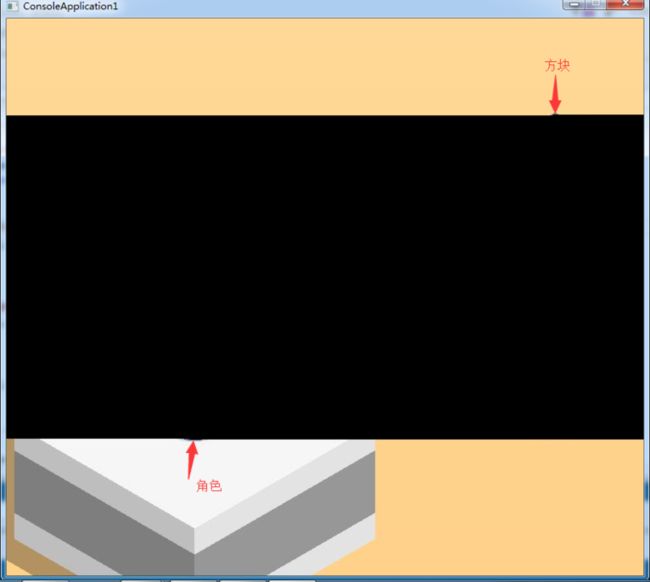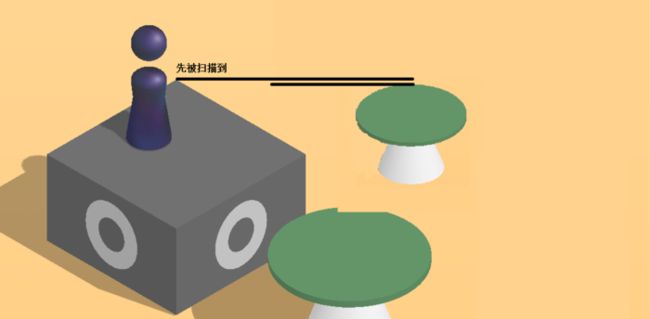一、开发环境
- 开发环境
使用语言:C/C++
IDE:VS2010+ - 其他三方库
EasyX(http://www.easyx.cn/downloads/)
ADB(链接:https://pan.baidu.com/s/1ghjbm51 密码:v68m) - ADB环境变量配置
打开adb文件夹,将此路径添加到环境变量中;
手机使用数据线连接电脑,并打开USB调试;
打开cmd窗口,输入adb devices查看设备是否已连接,如图:
-
EasyX安装
双击打开安装文件,选择相应的VS版本即可,如图:
- 在VS中新建项目
vs2017 - 文件 - 新建 - 项目 - Win32控制台应用程序 - 空项目 - 完成
解决方案资源管理器 - 源文件 - 新建项 - 新建main.cpp
二、程序开发
2.1 使用adb操作手机
-
使用adb命令截屏
#include
#include #include //EasyX库 int main() { // 截屏并保存 system("adb shell screencap -p /sdcard/screen.png"); system("adb pull /sdcard/screen.png"); // ... return 0; } 运行后打开项目路径检查是否存在screen.png,如图:
-
模拟长按屏幕
// 在程序中添加以下代码: // 模拟手指按压 // 按下坐标(200,300),离开坐标(205,305),按压时间500ms system("adb shell input swipe 200 300 205 305 500");
打开微信跳一跳,运行程序,查看是否跳跃
2.2 处理截图
-
目的
通过截图获取角色位置、待跳的方块位置、以及它们之间的距离,进而计算屏幕按压时间 -
为了在程序中处理截图,需要将截图格式转化为jpg,添加部分代码后程序如下:
#include
#include #include #include "atlimage.h" // 处理图像格式 IMAGE image; // 保存完整截图 int main() { initgraph(1080,1920); // 初始化窗口,与截图大小对应 system("adb shell screencap -p /sdcard/screen.png"); system("adb pull /sdcard/screen.png"); CImage cimage;// 图像格式转换 cimage.Load(L"screen.png"); cimage.Save(L"screen.jpg"); loadimage(&image, L"screen.jpg"); //将截图保存到image变量中 putimage(0, 0, &image); //贴图 // system("adb shell input swipe 200 300 205 305 500"); system("pause"); closegraph(); // 关闭图形界面 return 0; } 运行程序,检查窗体是否成功加载截图,如图:
-
由于截图过大,且上下部分均不是游戏有效区域,故对图像进行裁剪,取得必须部分,经计算取得800*700的大小即可:
#include
#include #include #include "atlimage.h" // 处理图像格式 IMAGE image,img; // 保存完整截图与裁剪后截图 int main() { initgraph(800,700); // 初始化窗口 system("adb shell screencap -p /sdcard/screen.png"); system("adb pull /sdcard/screen.png"); CImage cimage; // 图像格式转换 cimage.Load(L"screen.png"); cimage.Save(L"screen.jpg"); loadimage(&image, L"screen.jpg"); //将截图保存到image变量中 SetWorkingImage(&image); // 修改工作区 getimage(&img, 100, 600, 800, 700); // 切割图片 SetWorkingImage(NULL); // 恢复工作区 putimage(0, 0, &img); //贴图 // system("adb shell input swipe 200 300 205 305 500"); system("pause"); closegraph(); // 关闭图形界面 return 0; } 运行程序,如下:
2.3 角色、方块定位
-
在获取到游戏区域之后,便可以在此区域中通过颜色找到人物位置与方块位置,而像素代表了颜色,故需要取到每一个像素点:
DWORD* pMem; //窗口显存 int x,y; int xy[800][700]; // 保存img中所有的像素点 pMem = GetImageBuffer(NULL); //获取窗口的显存 SetWorkingImage(&img); for (y = 0; y < 700; y++) for (x = 0; x < 800; x++) xy[x][y] = getpixel(x, y); // 获取像素点 // 贴图... cleardevice(); // 清除屏幕 // 重新贴图 for (x = 0; x < 800; x++) { for (y = 0; y < 700; y++) { int b = xy[x][y]&0xff; // 获取低8位 int g = (xy[x][y] >> 8) & 0xff; // 低8位去掉,再取低8位 int r = xy[x][y] >> 16; // 取高16位 pMem[y * 800 + x] = BGR(xy[x][y]); } } FlushBatchDraw(); // 刷新缓存,显示图形
以上代码可以获取到img中的每一个像素点,并且以像素点重新进行贴图
-
在获取到所有点的颜色值之后,便可以开始根据颜色定位人物与跳跃点。从上到下开始逐像素扫描,则大部分情况下(极少数情况在后面处理)会先扫描到跳跃的方块,故以此定位跳跃的方块位置:
int xx1,yy1; // 方块的顶部坐标 SetWorkingImage(&img); for (y = 0; y < 700; y++) { for (x = 0; x < 800; x++) { xy[x][y] = getpixel(x, y); // 获取像素点 // 自上而下进行扫描,若扫描到了方块的颜色,则跳出循环,不再获取像素点 if (isNewBlock(xy[x][y])) // 判断是否是新的盒子 { xx1 = x; yy1 = y; goto next; } } } next: // ... // 判断是否是新的盒子 BOOL isNewBlock(int color){}
-
判断人物的位置,人物的颜色是固定的,故较容易取到。人物分为头和体,从上到下扫描则会扫描到头,那么就从下到上开始扫描:
int peopleX,peopleY; // 人物坐标 next: for (y = 699; y >= 0; y--) // 自下而上开始扫描 { for (x = 0; x < 800; x++) { xy[x][y] = getpixel(x, y); // 获取像素点 if (ColorFun(xy[x][y], RGB(55, 60, 100), 10)) //如果颜色是人物的颜色 { peopleX = x; // 获得人物的坐标 peopleY = y; break; } } if (ColorFun(xy[x][y], RGB(55, 60, 100), 10)) break; } // 判断颜色是否相似 BOOL ColorFun(COLORREF color1, COLORREF color2, int diff){}
-
在确定角色、方块的位置后,即可以开始计算距离并跳跃。但刚才所用到的ColorFun()与isNewBlock()还仍未提供实现细节。
ColorFun()主要进行颜色相似的判断:BOOL ColorFun(COLORREF color1, COLORREF color2, int diff) { // 取两种颜色的R、G、B值 int r1 = GetRValue(color1); int g1 = GetGValue(color1); int b1 = GetBValue(color1); int r2 = GetRValue(color2); int g2 = GetGValue(color2); int b2 = GetBValue(color2); if (sqrt(double((r2-r1)*(r2-r1) + (g2-g1)*(g2-g1) + (b2-b1)*(b2-b1))) < diff) { return TRUE; } return FALSE; } /* sqrt(double((r2-r1)*(r2-r1) + (g2-g1)*(g2-g1) + (b2-b1)*(b2-b1)) 颜色由R、G、B三基色组成,两个颜色值越接近,则其R、G、B值越接近 三种基色的颜色差的平方根的值则代表两种颜色的相似度,值越小则越相似 该函数的diff参数即为相似度,可以手动指定来确定颜色相似的程度 */
isNewBlock()收集了跳一跳中绝大多数盒子模型的颜色:
BOOL isNewBlock(int color) { // color为在img中取到的像素 int r = GetRValue(color); int g = GetGValue(color); int b = GetBValue(color); if (colorFun(color, RGB(246, 246, 246), 10))//浅白色 return TRUE; else if (colorFun(color, RGB(250, 250, 250), 10)) return TRUE; else if (colorFun(color, RGB(255, 255, 255), 0))//纯白色 return TRUE; else if (colorFun(color, RGB(100, 148, 106), 20))//墨绿色 return TRUE; else if (colorFun(color, RGB(113, 113, 113), 10))//深灰色 return TRUE; else if (colorFun(color, RGB(245, 128, 58), 10))//橙色 return TRUE; else if (colorFun(color, RGB(186, 239, 69), 10))//浅绿色 return TRUE; else if (colorFun(color, RGB(234, 203, 174), 10))//木质桌子 return TRUE; else if (colorFun(color, RGB(254, 240, 89), 10))//黄色 return TRUE; else if (r > 124 && r < 134 && g>111 && g < 121 && b > 219 && b < 229)//紫色相间 return TRUE; else if (r > 75 && r < 85 && g>158 && g < 165 && b > 85 && b < 95)//大圆绿柱子 return TRUE; else if (colorFun(color, RGB(254, 74, 83), 10))//红色 return TRUE; else if (colorFun(color, RGB(152, 114, 111), 10))//华岩石 return TRUE; else if (colorFun(color, RGB(117, 117, 117), 10))//马桶 return TRUE; else if (colorFun(color, RGB(225, 199, 142), 10)) return TRUE; else if (colorFun(color, RGB(241, 241, 241), 10))//书本 return TRUE; else if (colorFun(color, RGB(255, 172, 178), 10))//粉色盒子 return TRUE; else if (colorFun(color, RGB(73, 73, 73), 3))//奶茶杯子 return TRUE; else if (colorFun(color, RGB(147, 147, 147), 10))//类似唱片机 return TRUE; return FALSE; }
-
综合以上内容,加入代码:
IMAGE image; //保存图片 IMAGE img; //保存需要的图片,裁剪后 int xy[800][700]; //保存img中所有的像素点 DWORD* pMem; //窗口显存 int x, y; int xx1, yy1; //第一个点的坐标,目标方块顶的坐标 int peopleX, peopleY; //人的坐标 BOOL isNewBlock(int color); BOOL ColorFun(COLORREF color1, COLORREF color2, int diff); int main() { initgraph(800, 700); // 初始化窗口 pMem = GetImageBuffer(NULL); //获取窗口的显存 system("adb shell screencap -p /sdcard/screen.png"); system("adb pull /sdcard/screen.png"); CImage cimage;// 图像格式转换 cimage.Load(L"screen.png"); cimage.Save(L"screen.jpg"); loadimage(&image, L"screen.jpg"); //将截图保存到image变量中 SetWorkingImage(&image);// 修改工作区 getimage(&img, 100, 600, 800, 700);// 切割图片 SetWorkingImage(&img); for (y = 0; y < 700; y++) { for (x = 0; x < 800; x++) { xy[x][y] = getpixel(x, y); // 获取像素点 if (isNewBlock(xy[x][y])) // 判断是否是新的盒子 { xx1 = x; yy1 = y; goto next; } } } next: // 获取角色位置 for (y = 699; y >= 0; y--) { for (x = 0; x < 800; x++) { xy[x][y] = getpixel(x, y); if (ColorFun(xy[x][y], RGB(55, 60, 100), 10)) { peopleX = x; peopleY = y; break; } } if (ColorFun(xy[x][y], RGB(55, 60, 100), 10)) break; } SetWorkingImage(NULL); // 恢复工作区 putimage(0, 0, &img); //贴图 getchar(); cleardevice(); // 清除屏幕 //重新贴图 for (x = 0; x < 800; x++) { for (y = 0; y < 700; y++) { int b = xy[x][y]&0xff; //获取低8位 int g = (xy[x][y] >> 8) & 0xff; //低8位去掉,再取低8位 int r = xy[x][y] >> 16; //取高16位 pMem[y * 800 + x] = BGR(xy[x][y]); } } FlushBatchDraw(); //刷新缓存,显示图形 // system("adb shell input swipe 200 300 205 305 500"); system("pause"); closegraph(); // 关闭图形界面 return 0; } BOOL isNewBlock(int color){} BOOL ColorFun(COLORREF color1, COLORREF color2, int diff){}
运行程序,如图:
角色自下而上进行扫描,方块自上而下进行扫描,在扫描到模型后停止扫描,故中间有一大块是无颜色填充的,这样就能更高效的定位人物和方块。
2.4 计算和跳跃
-
在角色和方块定位时都获取到了坐标值,利用这个坐标值进行距离的计算,并根据距离与时间的关系计算长按屏幕的时间。
// 计算目标跳点 int xxx = xx1 + 10; int yyy = yy1 + 95; // 计算距离 int distance = sqrt(double((yyy - peopleY)*(yyy - peopleY) + (xxx - peopleX)*(xxx - peopleX))); // 计算时间 int time = 1.35 * distance; // 执行跳跃 sprintf(str, "adb shell input swipe 200 300 205 305 %d",time); system(str);
-
目标点的选定逻辑
在定位时获取到了顶部坐标(xx1,yy1),那么是否需要底部坐标,进而求中心点呢?这么做更精确,但是每次跳跃都会跳到中心,显然辅助被外挂检测机制检测到的概率更大,故选用下图所示逻辑计算跳点:
如图,以(x,y)作为方块顶点,各种模型的切点与切线均如图所示,以x和y增加部分偏移量而得出的目标点(绿线),对于小方块来说更靠近中间,但是大方块则基本不在中心,这样既考虑了小方块,又避免了外挂检测。程序默认采用(x+10,y+95)进行跳点计算,可根据实际效果进行微调。 -
距离的计算
距离采用勾股定理进行计算 -
时间的计算
程序默认采用了1.35为系数进行时间计算,可根据实际效果进行微调。 -
此时程序如下:
IMAGE image; //保存图片 IMAGE img; //保存需要的图片,裁剪后 int xy[800][700]; //保存img中所有的像素点 DWORD* pMem; //窗口显存 int x, y; int xx1, yy1; //第一个点的坐标,目标方块顶的坐标 int peopleX, peopleY; //人的坐标 BOOL isNewBlock(int color); BOOL ColorFun(COLORREF color1, COLORREF color2, int diff); int main() { initgraph(800, 700); // 初始化窗口 pMem = GetImageBuffer(NULL); //获取窗口的显存 system("adb shell screencap -p /sdcard/screen.png"); system("adb pull /sdcard/screen.png"); CImage cimage;// 图像格式转换 cimage.Load(L"screen.png"); cimage.Save(L"screen.jpg"); loadimage(&image, L"screen.jpg"); //将截图保存到image变量中 SetWorkingImage(&image);// 修改工作区 getimage(&img, 100, 600, 800, 700);// 切割图片 SetWorkingImage(&img); for (y = 0; y < 700; y++) { for (x = 0; x < 800; x++) { xy[x][y] = getpixel(x, y); // 获取像素点 if (isNewBlock(xy[x][y])) // 判断是否是新的盒子 { xx1 = x; yy1 = y; goto next; } } } next: // 人物坐标 for (y = 699; y >= 0; y--) { for (x = 0; x < 800; x++) { xy[x][y] = getpixel(x, y); if (ColorFun(xy[x][y], RGB(55, 60, 100), 10)) { peopleX = x; peopleY = y; break; } } if (ColorFun(xy[x][y], RGB(55, 60, 100), 10)) break; } SetWorkingImage(NULL); // 恢复工作区 putimage(0, 0, &img); //贴图 getchar(); cleardevice(); // 清除屏幕 //重新贴图 for (x = 0; x < 800; x++) { for (y = 0; y < 700; y++) { int b = xy[x][y]&0xff; //获取低8位 int g = (xy[x][y] >> 8) & 0xff; //低8位去掉,再取低8位 int r = xy[x][y] >> 16; //取高16位 pMem[y * 800 + x] = BGR(xy[x][y]); } } FlushBatchDraw(); //刷新缓存,显示图形 // 计算目标点 int xxx = xx1 + 10; int yyy = yy1 + 95; int distance = sqrt(double((yyy-peopleY)*(yyy-peopleY)+(xxx-peopleX)*(xxx-peopleX))); int time = 1.35 * distance; sprintf(str, "adb shell input swipe 200 300 205 305 %d", time); system(str); system("pause"); closegraph(); // 关闭图形界面 return 0; } BOOL isNewBlock(int color){} BOOL ColorFun(COLORREF color1, COLORREF color2, int diff){}
2.5 优化改进
-
在2.4完成之后,运行程序可以实现单步计算和跳跃,若要自动跳跃,则添加循环即可。
-
关于图形界面
在制作初期,图形界面可以更直观的显示计算与定位过程,但在程序开发结束后,图形显示部分可注释。 -
极少数情况无法识别跳跃点
在游戏中有一类极少遇到的情况,如下图:
如图,已跳过的方块的纵坐标小于待跳方块的纵坐标,所以会被先扫描到,对于这种情况,采用如下方案解决:先扫描角色,若角色x坐标小于400,则人物在左侧,那么人物左侧的像素就不必再被扫描,若人物在右侧,则人物右侧的内容也不必扫描。
-
反检测
触摸点:使用随机数选择触摸点,使操作更接近人。程序默认方案为:srand((unsigned int)time(NULL)); // 使触摸点在一个小范围内随机选择 touchX = rand() % 80 + 200; // 200-279 touchY = rand() % 85 + 300; // 300-384
2.6 优化后代码
#include#include #include #include "atlimage.h" #include IMAGE image, img; // 截图图像 int coor[800][700]; // 保存截图(处理后)中所有的像素点 int blockX, blockY; // 目标方块顶部坐标 int peopleX, peopleY; // 角色的坐标 int touchX, touchY; // 模拟按下的坐标 int x, y; char str[100]; BOOL isNewBlock(int color); BOOL colorFun(COLORREF color1, COLORREF color2, int diff); int main() { srand((unsigned int)time(NULL)); while (1) { // 截图并保存 printf("capturing data and screen:"); system("adb shell screencap -p /sdcard/screen.png"); system("adb pull /sdcard/screen.png"); // 截图格式转换 png -> jpg CImage cimage; cimage.Load(L"screen.png"); cimage.Save(L"screen.jpg"); loadimage(&image, L"screen.jpg"); // 把截图保存到image // 切割图片,取到游戏区,舍弃非游戏区域,加快判断效率 SetWorkingImage(&image); getimage(&img, 100, 600, 800, 700); SetWorkingImage(&img); printf("getting the role and block location...\n"); // 扫描角色坐标,从下往上(从上往下扫描到头部会停止) for (y = 699; y >= 0; y--) { for (x = 0; x < 800; x++) { coor[x][y] = getpixel(x, y);// 保存像素点 if (colorFun(coor[x][y], RGB(55, 60, 100), 10)) { peopleX = x; peopleY = y; goto getRole; } } } getRole: // 判断角色在左边还是右边,加快图形判断效率,处理极小形方块的bug for (y = 0; y < 700; y++) { for (x = ((peopleX < 400) ? peopleX + 60 : 0); x < ((peopleX < 400) ? 800 : peopleX - 60); x++) { coor[x][y] = getpixel(x, y); // 获取像素点 if (isNewBlock(coor[x][y])) // 判断是否是新的盒子 { blockX = x; blockY = y; goto getBlock; } } } getBlock: printf("calculate jump and touch coordinates...\n"); // 计算目标点 int targetX = blockX + 10; int targetY = blockY + 95; // 根据随机数种子模拟手指按下坐标,防外挂检测 touchX = rand() % 80 + 200; // 200-279 touchY = rand() % 85 + 300; // 300-384 int distance = sqrt(double((targetY - peopleY)*(targetY - peopleY) + (targetX - peopleX)*(targetX - peopleX))); int time = 1.35 * distance; sprintf(str, "adb shell input swipe %d %d %d %d %d", touchX, touchY, touchX + 1, touchY + 1, time); printf("executing:(%d,%d)->(%d,%d) touching (%d,%d) for %dms\n", peopleX, peopleY, targetX, targetY, touchX, touchY, time); system(str); Sleep(1500); } return 0; } // 判断颜色是否相似,diff 越小越相似 BOOL colorFun(COLORREF color1, COLORREF color2, int diff) { return sqrt(double((GetRValue(color2) - GetRValue(color1))*(GetRValue(color2) - GetRValue(color1)) + (GetGValue(color2) - GetGValue(color1))*(GetGValue(color2) - GetGValue(color1)) + (GetBValue(color2) - GetBValue(color1))*(GetBValue(color2) - GetBValue(color1)))) < diff; } // 判断是否是新的盒子 BOOL isNewBlock(int color) { int r = GetRValue(color); int g = GetGValue(color); int b = GetBValue(color); if (colorFun(color, RGB(246, 246, 246), 10))//浅白色 return TRUE; else if (colorFun(color, RGB(250, 250, 250), 10)) return TRUE; else if (colorFun(color, RGB(255, 255, 255), 0))//纯白色 return TRUE; else if (colorFun(color, RGB(100, 148, 106), 20))//墨绿色 return TRUE; else if (colorFun(color, RGB(113, 113, 113), 10))//深灰色 return TRUE; else if (colorFun(color, RGB(245, 128, 58), 10))//橙色 return TRUE; else if (colorFun(color, RGB(186, 239, 69), 10))//浅绿色 return TRUE; else if (colorFun(color, RGB(234, 203, 174), 10))//木质桌子 return TRUE; else if (colorFun(color, RGB(254, 240, 89), 10))//黄色 return TRUE; else if (r > 124 && r < 134 && g>111 && g < 121 && b > 219 && b < 229)//紫色相间 return TRUE; else if (r > 75 && r < 85 && g>158 && g < 165 && b > 85 && b < 95)//大圆绿柱子 return TRUE; else if (colorFun(color, RGB(254, 74, 83), 10))//红色 return TRUE; else if (colorFun(color, RGB(152, 114, 111), 10))//华岩石 return TRUE; else if (colorFun(color, RGB(117, 117, 117), 10))//马桶 return TRUE; else if (colorFun(color, RGB(225, 199, 142), 10)) return TRUE; else if (colorFun(color, RGB(241, 241, 241), 10))//书本 return TRUE; else if (colorFun(color, RGB(255, 172, 178), 10))//粉色盒子 return TRUE; else if (colorFun(color, RGB(73, 73, 73), 3))//奶茶杯子 return TRUE; else if (colorFun(color, RGB(147, 147, 147), 10))//类似唱片机 return TRUE; return FALSE; }
三、程序运行
3.1 程序运行
- 安装adb
- 配置adb环境变量
- 手机使用数据线连接电脑,并打开USB调试
- 打开cmd窗口,输入
adb devices检测是否已连接 - 手机打开微信跳一跳
- 运行程序:如下图
3.2 程序修改
-
对于落地点的调整
// 计算目标点 int targetX = blockX + 10; // 修改 10 int targetY = blockY + 95; // 修改 95 -
对于距离与时间的关系微调
int time = 1.35 * distance; // 修改 1.35 -
对于新方块模型的扩充
添加到isNewBlock()方法中即可








